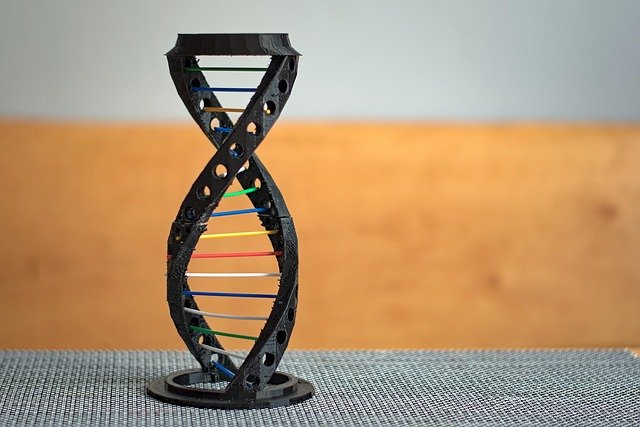CRISPR/Cas9 in Genome Editing and Beyond in 2024

The Way Gene Editing Works
For instance, researchers could make use of the different repair mechanisms to deliberately introduce a desired change in the sequence by using templates-independent HDR as well as introduce random modifications via template-independent NHEJ. If researchers supply the repair mechanism of the cell with a specific CRISPR Gene template that contains an alteration, for instance a mutation that causes disease and this HDR process will integrate the templated mutation into genome following Cas9 cutting. However, the more prone to error NHEJ pathway repair the Cas9 cut without the use of a template, by introducing random deletions and insertions (indels) which ultimately alter CRISPR Gene expression or lead to the loss of function. Both of these methods allow researchers to study how silence or altering an individual gene can affect the downstream pathway it is linked to.
CRISPR’s Limitations Overcoming
Researchers are often challenged by Cas9 cutting DNA in off-target areas, which could result in translocations, sudden large deletions, or unwanted gene expression modifications. To prevent such negative off-target effects, scientists design alternative strategies to Cas9.
Table 1. A brief overview of Cas9 and other common Cas9 alternatives 7 to 7
| Name | Organism of the origin | Different properties | PAM |
| Cas9 | Streptococcus pyogenes |
|
GC-rich (e.g., 5′-NGG-3′) |
| Cas12a | Acidaminococcus
Lachnospiraceae |
|
AT-rich (e.g., 5′-TTN-3′) |
| Cas13 | Leptotrichia shahii |
|
No reason |
Cas12a
Cas12a has many advantage in comparison to Cas9 (Table 1.). It creates staggered, not sharp DNA breaks, which favor HDR mechanisms, instead of HDR and NHEJ. HDR. Furthermore, Cas12a does not need the tracrRNA. It has RNase activity that processes an array of pre-crRNA that has multiple guide RNAs to facilitate multigene editing compared to Cas9. Cas12a is also less prone to off-target effects as compared Cas9 Cas9 and is a unique source of a PAM-independent single-stranded DNA destruction which can be useful in diagnosis applications.
Cas13
Cas13 is different with Cas9 and Cas12a in that it is able to cleave single-stranded DNA instead of RNA. Utilizing its guide sequence it targets RNA inside the eukaryotic cell for destruction with high efficacy. This is an exciting approach for the engineering of transcriptomes, since it regulates gene expression, without altering the DNA sequence.
Genome Modifications Using Prime or Base Editing
Prime editors and base editors are the latest generation of CRISPR-based technology that are based upon catalytically deficient Cas proteins, also known as nickases which scientists fuse to other enzymes that alter DNA. Because Cas Nickases are not as active than traditional Cas nucleases, they create one-stranded breaks in DNA (or nicks) instead of double-stranded ones. They do not usually involve the DNA repair mechanism, and this permits the fusion enzymes to work on their DNAs with more accuracy in editing than repair-mediated techniques.
What is base editing?
Base editing employs modifications to DNA cutting Cas proteins that preserve their DNA binding properties without introducing double-stranded break. Cas proteins with catalytic impairment help an adenine or deaminase enzyme to specific DNA site and cause C G-to-T and A T C conversions. Theoretically base editing could correct any mutation that causes a transition (A to G and C to T) that account for about 30% of all known diseases and constitute the most significant class of human disease-causing mutations.
What is prime editing?
To edit the prime sequence for prime editing, a nuclease impaired Cas protein is recruited by a reverse transcriptase an desired sequence of DNA, without creating double-stranded break. The reverse transcriptase converts RNA to DNA. In the context of prime editing reverse transcriptase substitutes or inserts the DNA sequence encoded by a guide to prime editors (pegRNA). (pegRNA). The highly flexible prime editors aren’t restricted to the precise pair of base editors, and are able to catalyze the switching between any base. They can also trigger deletions of that can be as high as 44 base pairs (bps) or deletions that can be as high as 80 bps.
Transcriptome Editing Using CRISPR Modulation, dCas and
CRISPR modulation affects gene expression but does not cause modifications of the DNA structure. Scientists have fused an inactive catalytically Cas nuclease (dead Cas or dCas) with a repressor or repressor Domain for CRISPR interfering (CRISPRi) or an activation of transcription domain for activation of CRISPR (CRISPRa). The dCas CRISPRa fusion protein is able to bind to the DNA sequence of interest without breaking the DNA with double-stranded breaks. It also attracts small regulatory RNAs to the target sequence, and triggers either knockdown of gene expression (CRISPRi through the repressor region) or activation of gene expression (CRISPRa).
NEW Technology Applications for CRISPR Technology Applications
Base editing is a powerful therapeutic potential due to the low chance of causing deletions and insertions. It has been used with CAR-T cells for clinical studies to cure leukemia patients that are not treatable.
Since prime editing can fix the majority of mutations, with the exception of large deletions, duplications, chromosomal rearrangements, or insertions Researchers are studying the possibility of treating many different diseases, from genetic cancer to inherited.
Additionally, preclinical CRISPRi as well as CRISPRa applications enable researchers to run large-scale tests of gene networks behind illnesses with no known cause like neurodegenerative disorders.



